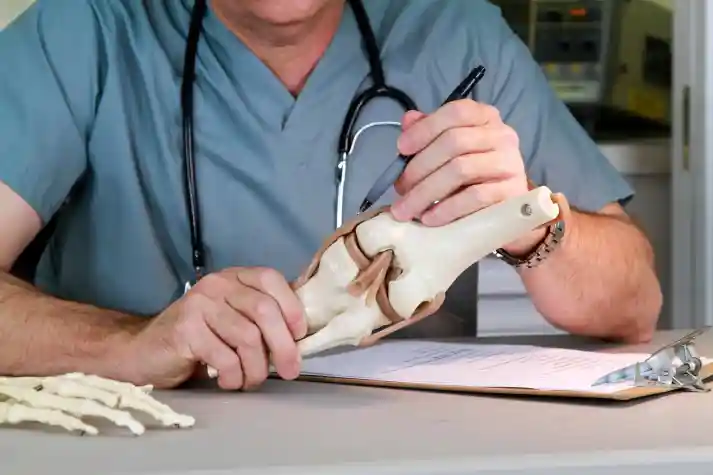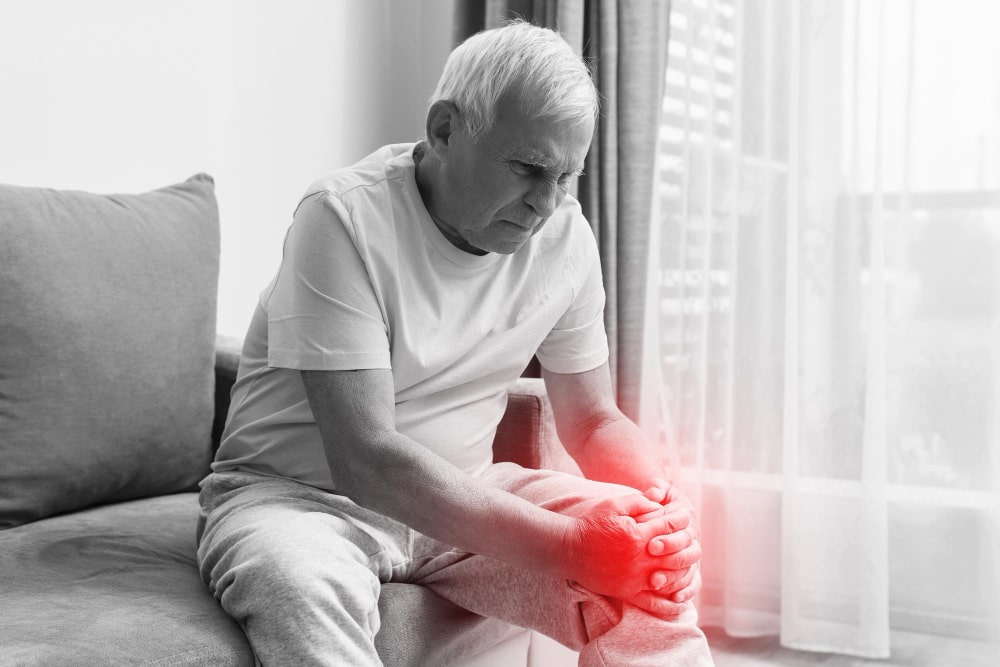Joint pain after 40 is a common complaint, but that doesn’t mean you should ignore it or assume it’s “just age catching up.” While some wear and tear is natural, persistent or worsening joint pain may be a sign of underlying conditions that need medical attention.
At River NIMS Hospitals, our Orthopaedics Department specializes in diagnosing and treating joint conditions, especially those related to age, activity, or injury. This blog will help you understand why joint pain occurs after 40, what symptoms to watch for, and when to see an orthopaedic specialist.
🧠 Why Does Joint Pain Increase After 40?
From your late 30s and into your 40s, the body begins to undergo natural aging processes:
- Cartilage wears down, especially in weight-bearing joints like the knees and hips.
- Muscle mass and bone density begin to decrease.
- Tendons and ligaments lose flexibility, increasing strain on joints.
- Old injuries or repetitive strain may resurface with pain or stiffness.
- Sedentary lifestyle and excess weight put added pressure on joints.
While these are typical aging-related changes, they don’t mean you’re doomed to live with pain.
🩺 Common Causes of Joint Pain After 40
Here are some of the most frequent conditions we see in adults aged 40+:
1. Osteoarthritis (OA)
The most common type of arthritis, OA results from cartilage degeneration in joints like the knees, hips, hands, and spine.
Symptoms:
- Stiffness in the morning
- Pain with movement
- Grinding or popping sounds
- Joint swelling
2. Bursitis
Inflammation of the fluid-filled sacs (bursae) that cushion the joints.
Common in: Shoulders, elbows, hips, and knees
Often caused by: Repetitive motion or prolonged pressure
3. Tendonitis
Overuse of tendons (connecting muscles to bones) can cause inflammation and pain.
Common in: Knees (jumper’s knee), shoulders (rotator cuff), elbows (tennis elbow)
4. Previous Sports Injuries
An old ACL tear, meniscus injury, or ankle sprain may become more symptomatic as you age, especially if untreated.
5. Rheumatoid Arthritis (RA)
An autoimmune condition where the body attacks its own joints. Although it often starts before 40, symptoms can become more noticeable with age.


⚠️ When to See an Orthopaedic Specialist
Not all joint pain is urgent—but certain signs indicate it’s time to consult a specialist. Visit River NIMS Hospitals if you experience:
- Joint pain that lasts more than 2 weeks
- Swelling or warmth in the joint
- Stiffness that limits daily activity
- Clicking, locking, or instability in joints
- Pain that wakes you at night
- Difficulty standing, walking, or using stairs
- Visible deformities or joint misalignment
Ignoring these signs can lead to worsening damage, joint deformities, and reduced mobility.
🧪 What to Expect at the Orthopaedic Clinic
At River NIMS Hospitals, we begin with:
- A detailed medical history and physical exam
- X-rays to check bone alignment and joint space
- MRI or CT scans for soft tissue evaluation
- Blood tests to rule out infections or autoimmune conditions
- Bone density tests if osteoporosis is suspected
Once the cause is clear, we recommend a tailored treatment plan.
💊 Treatment Options for Joint Pain
🟢 Conservative Management:
Most joint issues can initially be managed without surgery.
- Pain relief medications (NSAIDs)
- Physiotherapy to strengthen muscles and improve flexibility
- Lifestyle changes: weight loss, ergonomic adjustments, low-impact exercise
- Supplements: calcium, vitamin D, glucosamine
- Injections: corticosteroids or hyaluronic acid for knee OA
🔴 Surgical Interventions:
If pain persists or worsens, especially with structural damage, surgery may be needed.
- Arthroscopy: Minimally invasive procedure to remove damaged tissue
- Joint replacement: Total or partial replacement of hip, knee, or shoulder joints
- Osteotomy: Bone realignment procedure to relieve pressure from damaged joints
River NIMS offers advanced minimally invasive orthopaedic surgeries, ensuring faster recovery and less post-operative pain.
🧘 Preventing Joint Pain After 40
You don’t need to wait for pain to act. Here’s how to protect your joints proactively:
✅ Do:
- Engage in low-impact exercises (like swimming, cycling, walking)
- Focus on strength training for surrounding muscles
- Maintain a healthy weight to reduce joint load
- Use proper posture and ergonomics at work
- Warm up before physical activity and stretch afterward
❌ Don’t:
- Ignore persistent pain
- Push through intense discomfort during exercise
- Lift heavy weights without proper form
- Lead a sedentary lifestyle
At River NIMS, we offer joint wellness clinics to guide patients on long-term joint care through physiotherapy and fitness counseling.
👩⚕️ Real Case: Mrs. Lakshmi’s Journey to Pain-Free Living
Mrs. Lakshmi, a 52-year-old school teacher, visited us with severe knee pain that affected her ability to walk. After a clinical evaluation, we diagnosed her with advanced osteoarthritis in both knees.
After trying medications and physiotherapy for 6 months, she opted for bilateral knee replacement surgery. Today, she walks unaided and leads a pain-free, active life.
Her story is a reminder: pain may be common after 40—but it’s not normal, and it’s certainly treatable.
🏥 Why Choose River NIMS Hospitals for Orthopaedic Care?
- Board-certified orthopaedic surgeons & joint specialists
- Advanced imaging and surgical technology
- In-house physiotherapy and rehabilitation units
- Personalized treatment plans for every age group
- Minimally invasive options with faster recovery
From joint pain to sports injuries to arthritis, we’re here to help you move better and live better.
🔚 Final Thoughts: Move Without Pain
Joint pain after 40 doesn’t have to slow you down. Whether it’s a mild ache or a chronic condition, early diagnosis and the right treatment can restore your mobility and quality of life.
If you’ve been silently suffering or dismissing your pain, now’s the time to act. Visit the Orthopaedics Department at River NIMS Hospitals and take your first step toward a pain-free future.



